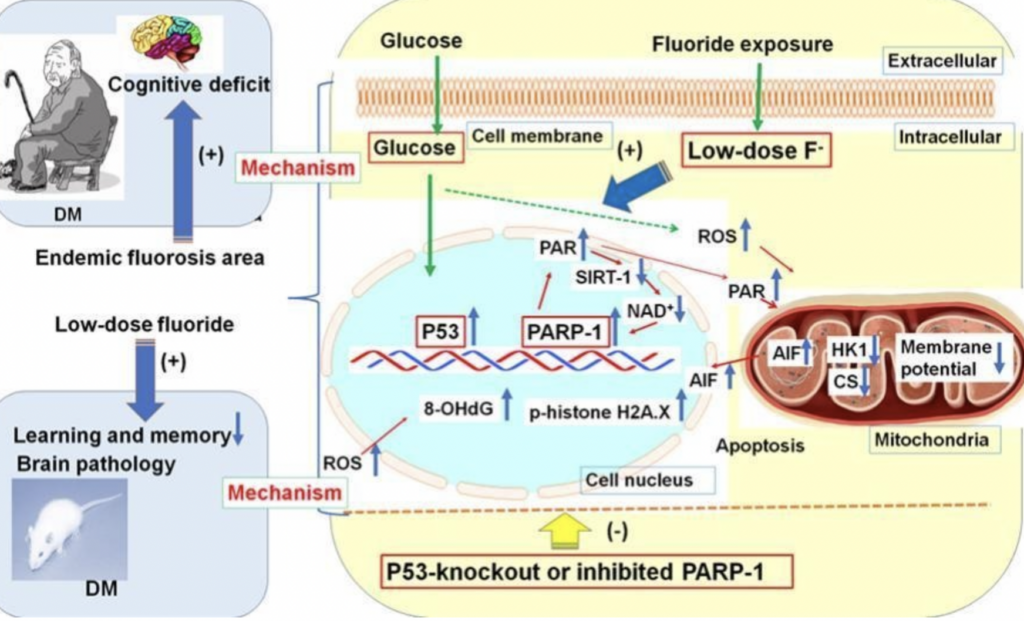Fundraising Update
Yesterday, you gave us another incredible day of support! We raised $4,075 from 31 supporters. With the current “Christmas Miracle” $10,000 doubling challenge included, our current total stands at $58,573 from 332 donors towards FAN’s 2024 operating, education, and campaign budgets. THANK YOU ALL!
DONATIONS ARE STILL DOUBLED: The next $5,925 will continue to be doubled if we can raise it before midnight on December 31st.
FAN is the only organization keeping and maintaining an archive of all fluoride news and research from around the world. This is important because media outlets remove stories from the internet–especially about fluoridation spills and accidents–after a year or two. It’s important we preserve these stories so the world has an accurate picture of what occurred during the “fluoridation era” of civilization.
If you see the value in work like this, please consider making a tax-deductible donation to our 2024 operating budget so we can continue to develop and improve upon these efforts. Click here to use our secure online donation page.
*If your browser cannot open our new fundraising page, click here.
You can also donate by check, payable to: Fluoride Action Network
Checks can be mailed to:
Fluoride Action Network
PO Box 85
North Sutton, NH 03260
Fluoride Exposure Associated With Cognitive Dysfunction in Chinese Diabetics

Diabetic patients from an area of endemic fluorosis in China were found to have a higher prevalence of cognitive dysfunction and dementia than control patients or diabetics without fluorosis, according to a new study in Science of the Total Environment.
The researchers from Guizhou Medical University recruited diabetics who had experienced high fluoride exposure as indicated by their dental fluorosis, other diabetics without dental fluorosis, and more people with neither diabetes nor fluorosis as controls, and tested their cognitive function with the standard Mini Mental State Examination.
They found that in the control group, 18.5 percent had cognitive dysfunction or dementia. In the diabetes-only group 37 percent suffered from these disorders, and in the group, that had both diabetes and fluorosis, 53.6 percent had either cognitive dysfunction or dementia.
In reviewing the past research on fluoride’s association with diabetes, the authors wrote, “These observations indicate that prolonged intake of excessive amounts of fluoride damages human islet B cells in a dose-dependent manner. Residents of areas characterized by exposure to fluoride showed an inverse correlation between serum levels of fluoride and insulin and a positive correlation between the concentration of fluoride in their drinking water and their fasting levels of blood glucose.”
“Also of interest in this context is the observation that in children living in an area characterized by endemic fluorosis, exposure to low-to-moderate levels of fluoride was associated with overweight, as well as obesity, the strongest risk factor for developing diabetes,” they wrote.
“Our present findings that the cognitive decline in diabetic patients in an area of endemic fluorosis was more pronounced than in diabetic patients living in a region without chronic fluorosis suggests that fluoride promotes this decline,” conclude the authors.
Source: https://doi.org/10.1016/j.scitotenv.2023.169512
Subclinical Hypothyroidism Associated With Fluoridated Water in Moldova

A study of pregnant women in Moldova has found an association between fluoride exposure in drinking water and the development of subclinical hypothyroidism, according to an abstract published for the Balkan Medical Union on June 7th of this year.
The authors, the obstetrician and gynecologists Ecaterina Gorceag of Invitro Diagnostics and Angela Marian-Pavlenco, write:
“[T]he data analysis of 150 pregnant women from different regions of the Republic of Moldova demonstrated the higher incidence of subclinical hypothyroidism in pregnant women living in districts where the fluoride content in the water is high (Ceadîr-Lunga, ?tefan-Vod?).”
They note, “It has been scientifically proven that there is an association between subclinical hypothyroidism (SCH) during pregnancy and hypertension in pregnancy, preterm birth and impaired cognitive development of children.”
Source: https://ibn.idsi.md/sites/default/files/imag_file/2023_Rezumte_Balcaniada_e_book.pdf
Up to 80 Percent of Fluoridated Toothpaste Ingested by Children

A systematic analysis of eighteen studies by dental researchers from Serbian universities has reported that the average percentage of toothpaste ingested in each study ranged from a low of more than 10 percent to a high in one study of more than 80 percent.
Ironically, the investigators saw fluoride consumption from unintentional toothpaste ingestion as a desirable source of fluoride, garbling the European regulatory agency’s “adequate intake” level in the process.
They write, “The optimal daily fluoride intake recommended by European Food Safety Authority at roughly 50–70 g/kg bw/day may also need to be reevaluated in order to find the optimal daily dental product-derived fluoride intake for each person given the contribution of dental care products to total fluoride intake,” apparently meaning 50-70 micrograms per kilogram of body weight per day.
In a scientific opinion published by the European Food Safety Authority in 2013, the agency writes, “The AI [adequate intake] of fluoride from all sources (including non-dietary sources) is 0.05 mg/kg body weight per day for both children and adults, including pregnant and lactating women.”
The authors also acknowledge the risk of ingesting materials in the mouth while sleeping.
“[I]ndividuals who are asleep, unconscious, or under the influence of certain medications or substances may inadvertently swallow unwanted materials without realizing it. The severity of potential harm also depend on the quantity, concentration, and duration of exposure. These factors underscore the need for thorough analysis and risk assessment of the materials in question, as well as appropriate preventive measures based on the specific risks identified,” they write.
Dentists may prescribe high-dose fluoride toothpaste with the advice to leave the paste on all night while you are sleeping.
Source: https://10.3389/fpubh.2023.1279915
Australian Researcher Issues Strong Statement Against Fluoride Use

In a detailed yet highly readable style, an Australian investigator reviews the evidence on fluoridated water and presents a list of instructions for how to reduce your daily exposure to fluoride.
In a recent posting on The Nurture Parent Magazine website, Sarah Lantz, a researcher at the Queensland University of Technology, and author of the book Chemical Free Kids; Raising Healthy Children in a Toxic World, advises readers to:
-Stop drinking fluoridated water
-Eat a diet of whole foods
-Breastfeed your baby
-Say NO to dental fluoride gel treatments
-Xylitol benefits
Her piece includes a detailed critique of fluoridated toothpastes for children.
She writes, “Children swallowing too much fluoride toothpaste can suffer acute poisoning at doses as low as 0.1 to 0.3mg per kg of bodyweight. This generally presents in the form of gastric pain, nausea, vomiting, headache, dizziness, and flu-like symptoms. A child weighing 10kg need only ingest 1 to 3 grams of paste (less than 3% of a tube of fluoridated toothpaste) to experience one or more of these symptoms.”
“As my partner and I passed each other different brands of children’s toothpaste, we were struck by the irony of marketing. The manufacturers of children’s toothpaste create products just begging to be eaten by children. They generally tend to be sweet, glossy, glittery, luminescent and smell of bubblegum, strawberries and sherbet. While I was examining the toothpaste, a mother leaned over my shoulder and told me she had recently taken to putting all the toothpaste in a safety cupboard out of her children’s reach,” Lantz writes.
Source: https://www.nurtureparentingmagazine.com.au/physical/a-close-brush-with-poison/
Divided Council, Fearing Penalties, Keep Fluoridation on Track in New Zealand

Fearing crippling financial penalties, a bitterly divided Whangarei Council voted 7 to 6 on December 21 to continue the fluoridation of their water supply under the order of the Ministry of Health in New Zealand.
According to a report in the New Zealand Herald, council opponents of the fluoridation scheme, citing a High Court ruling that the order to fluoridate was unlawful, were narrowly defeated as hundreds of citizens supported them from the public gallery.
Jim Sephton, general manager for infrastructure for the district, said the costs of stopping or pausing fluoridation implementation would be about $9 million – including the $200,000 fine from the Health Ministry for not meeting the directive and ongoing $10,000 daily penalty costs, according to the paper.
A February 2 hearing has been scheduled before Judge Paul Radich, who ruled the fluoridation order unlawful, to remedy the Ministry’s error, which involved a failure to consult the District residents in violation of New Zealand law.
•• Michael Dolan can be contacted at <mdolan.ecsn@outlook.com>
•• The archives of The Fluoridation Review are available at: https://
